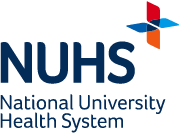With progress in technology and surgical techniques, ophthalmologists now have safe and effective methods to restore vision, even at early stages. The three main types of cataract removal techniques typically employed are:

Intracapsular Cataract Extraction
Intracapsular cataract extraction (ICCE) involves the removal of the entire lens and its capsule using a cryopencil. This is an older technique and while not in use in many countries, is still being applied in developing countries for subluxated cataracts.
Extracapsular Cataract Extraction (ECCE)
Extracapsular Cataract Extraction (ECCE) was the technique of choice for cataract surgery in Singapore, until the advancement of Phacoemulsification (PE) in the last several years. In ECCE, a 12mm incision is made in the eye to extract the lens. The lens capsule is left in place to hold an intraocular lens. About seven sutures are then used to seal the eye after surgery and are carefully tightened so as not to produce astigmatism. Presently, ECCE is the alternative for patients unsuitable for Phacoemulsification (PE).
Phacoemulsification is currently the most advanced technique for cataract removal and the method of choice in Singapore and other developed countries like the United Kingdom and the United States of America.
An ultrasound probe is used to breakdown the opaque lens without harming the capsule. These fragments are then aspirated out and a foldable intraocular lens (IOL) is then placed in through the 3mm incision. Once within the eye, the lens unfolds to take position inside the capsule.
The advantage of this method is that no sutures are needed because of the self-sealing incision used. Hence visual rehabilitation occurs within a shorter period of time due to the reduced post-operative inflammation and decreased surgically induced astigmatism. The procedure is safe enough to be done under topical anaesthesia (anaesthetic eyedrops). Visual rehabilitation is extremely fast and patients do not need to suspend their everyday activities.


.png?sfvrsn=24281ddc_1)
.png?sfvrsn=94a9724_1)
















